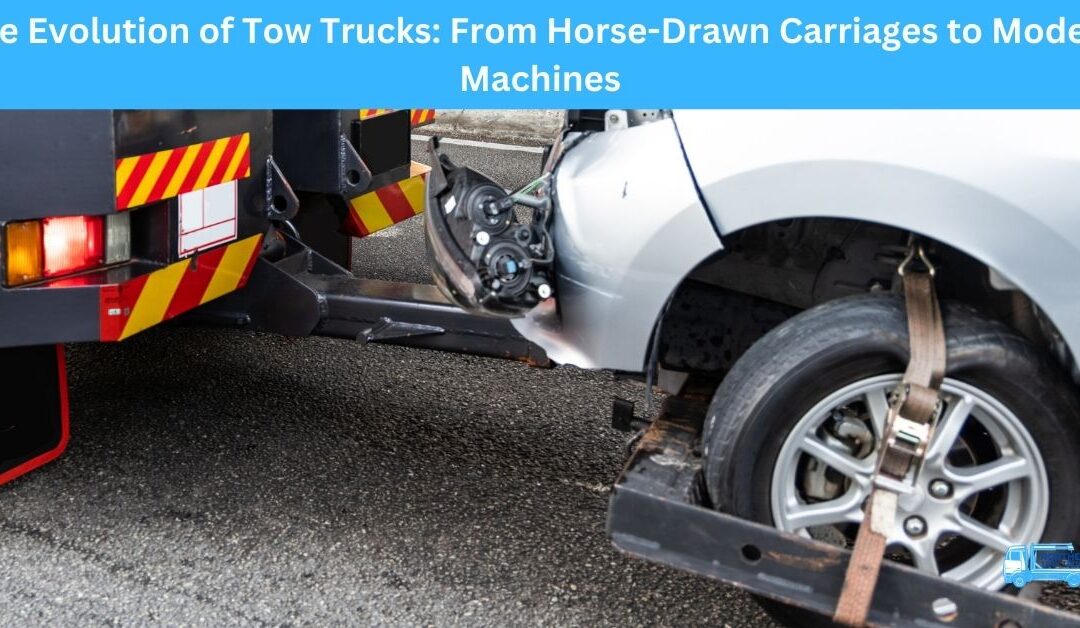Tow trucks, a staple of roadside assistance today, have a rich history that mirrors the evolution of transportation itself. From their humble beginnings as horse-drawn carriages to the technologically advanced machines we see today, the development of tow trucks reflects over a century of innovation.
The Early Days: Horse-Drawn Carriages
Before the invention of the automobile, the idea of a tow truck didn’t exist. In the late 19th century, when horse-drawn carriages were the primary mode of transportation, any breakdowns were handled differently. The process of moving a disabled carriage involved a combination of brute force, makeshift repairs, and often, additional horses. Early blacksmiths and carriage makers were the go-to for repairs, but there was no specialized vehicle for towing.
The Birth of the Tow Truck
The advent of the automobile in the early 20th century brought about new challenges, particularly when cars broke down. The first tow truck is credited to Ernest Holmes Sr. of Chattanooga, Tennessee, in 1916. After a friend’s car ran off the road, Holmes was inspired to design a rig that could help recover the vehicle. He mounted a crane and pulley system onto a 1913 Cadillac, creating the first prototype of a tow truck. Holmes’ invention led to the formation of the Holmes Wrecker company, which would dominate the industry for decades.
World War II and the Rise of Heavy-Duty Tow Trucks
As automobiles grew larger and more complex, so did the demand for tow trucks that could handle heavier loads. During World War II, military vehicles required robust towing solutions. This period saw the development of heavy-duty tow trucks, capable of towing tanks, large trucks, and other military equipment. Post-war, these innovations trickled into the civilian market, leading to more powerful and versatile tow trucks.
Modern Tow Trucks: Technology Meets Efficiency
Today’s tow trucks are a far cry from their early counterparts. Modern tow trucks come in various types, including hook and chain, wheel-lift, flatbed, and integrated tow trucks. Each type is designed for specific tasks, from towing passenger cars to heavy-duty vehicles like buses and semi-trucks.
Technology has significantly enhanced the efficiency and safety of towing operations. GPS systems, hydraulic lifts, and advanced braking systems are now standard features. Additionally, some modern tow trucks are equipped with telematics, allowing operators to monitor the vehicle’s condition and optimize routes in real-time.
The Future of Tow Trucks
The future of tow trucks is likely to be shaped by emerging technologies. Electric and autonomous vehicles are expected to influence tow truck design, with electric tow trucks already entering the market. These vehicles promise to reduce emissions and operating costs. Furthermore, as autonomous vehicles become more common, tow trucks may need to adapt to new challenges, such as towing driverless cars.
Conclusion
From the horse-drawn carriages of the 19th century to the cutting-edge machines of today, the evolution of tow trucks is a testament to human ingenuity and adaptation. As technology continues to advance, tow trucks will undoubtedly continue to evolve, meeting the ever-changing demands of the transportation industry.
If you are in Melbourne,and looking for an emergency tow truck service or roadside assistance Melbourne service, this is the best way to visit us.
Northern Tow Trucks
620 Canning St
Carlton North VIC 3054
(03) 7064 2500

